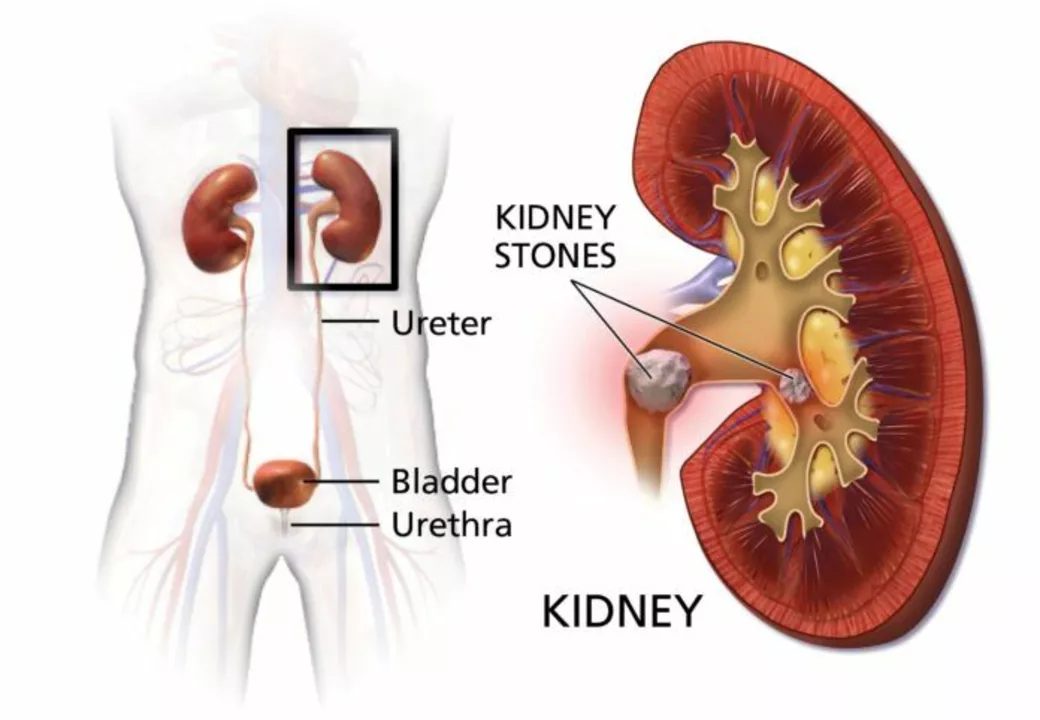SEARCH
Contrast-Induced Nephropathy: What It Is, Risks & Prevention
If you’ve ever had a CT scan or an MRI with contrast dye, you might have heard doctors mention "contrast‑induced nephropathy" (CIN). In plain terms, it’s a temporary dip in kidney function that can happen after the dye is injected. Most people bounce back, but for some, especially those with pre‑existing kidney issues, it can turn serious.
Why does this matter? Your kidneys filter waste and excess fluid from your blood. When they’re stressed by the contrast agent, they may not work as efficiently, leading to higher creatinine levels in lab tests. That spike can be a red flag for doctors and might delay other treatments you need.
Why the Contrast Dye Can Hurt Your Kidneys
The dye used in imaging is usually iodine‑based or gadolinium‑based. Both are good at highlighting blood vessels and organs, but they’re also a bit harsh on the kidneys because they have to filter them out quickly. In people with dehydration, diabetes, heart failure, or already reduced kidney function, the kidneys struggle more, making CIN more likely.
Another piece of the puzzle is how fast the dye travels through your system. A rapid surge can cause tiny blood vessels in the kidneys to constrict, reducing blood flow and creating oxidative stress. That combo can temporarily damage the delicate filtering structures inside the kidney.
Easy Ways to Lower Your Risk
The good news is you can take practical steps before your scan. First, stay well‑hydrated – drinking plenty of water the day before and on the day of the test helps flush the dye out faster. If you’re on a fluid restriction for another condition, talk with your doctor about safe ways to add extra fluids.
Second, let your health team know about any kidney problems, diabetes, or medications like NSAIDs that can affect kidney function. They might order a simple blood test (creatinine) before the scan and adjust the dye dose accordingly.
Third, some doctors give a short course of N‑acetylcysteine or sodium bicarbonate to protect kidneys. The evidence is mixed, but it’s low‑risk and worth discussing if you’re high‑risk.
If you take medications that can stress the kidneys – such as certain blood pressure pills, diuretics, or contrast‑heavy chemo drugs – ask whether they should be paused temporarily. Never stop a prescription on your own; always get guidance from a professional.
After the scan, keep an eye on how you feel. Most people don’t notice anything, but if you develop swelling, reduced urine output, or unusual fatigue, call your doctor. A follow‑up blood test in 24‑48 hours can confirm whether kidney function stayed stable.
Finally, consider alternative imaging methods when possible. Ultrasound and non‑contrast MRI can sometimes give the same diagnostic info without exposing you to dye at all.
Bottom line: contrast‑induced nephropathy is usually preventable with a few simple habits – stay hydrated, share your health history, and follow any pre‑scan instructions. By being proactive, you protect your kidneys and keep your diagnostic journey on track.

The Role of Cilostazol in Preventing Contrast-Induced Nephropathy
As a blogger, I recently came across an interesting topic - the role of Cilostazol in preventing contrast-induced nephropathy. From my research, it appears that Cilostazol is a medication that can help protect our kidneys from the harmful effects of contrast dye, which is often used during imaging procedures like CT scans or angiograms. By inhibiting platelet aggregation and promoting vasodilation, Cilostazol may reduce the risk of kidney damage in these situations. Clinical studies have shown promising results, but more research is needed to confirm its effectiveness. I encourage everyone to stay informed about this topic, as it could potentially benefit those undergoing medical procedures involving contrast dyes.
Continue reading